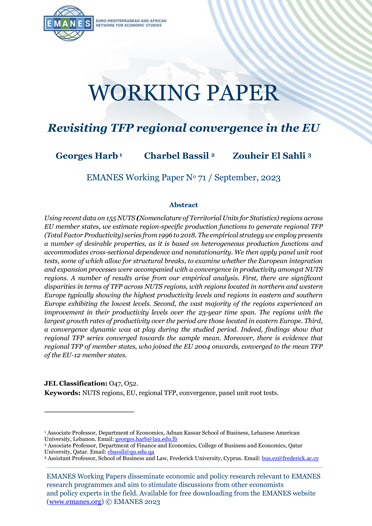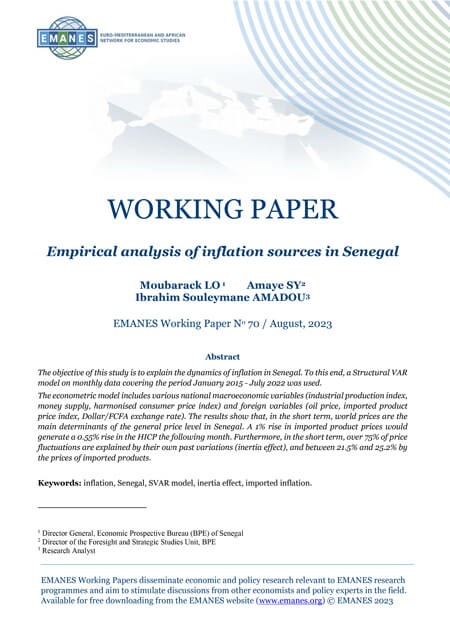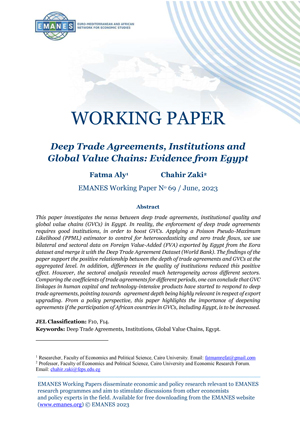
Revisiting TFP regional convergence in the EU
Using recent data on 155 NUTS (Nomenclature of Territorial Units for Statistics) regions across EU member states, we estimate region-specific production functions to generate regional TFP (Total Factor Productivity) series from 1996 to 2018. The empirical strategy we employ presents a number of desirable properties, as it is based on heterogeneous production functions and accommodates cross-sectional dependence and nonstationarity. We then apply panel unit root tests, some of which allow for structural breaks, to examine whether the European integration and expansion processes were accompanied with a convergence in productivity amongst NUTS regions. A number of results arise from our empirical analysis. First, there are significant disparities in terms of TFP across NUTS regions, with regions located in northern and western Europe typically showing the highest productivity levels and regions in eastern and southern Europe exhibiting the lowest levels. Second, the vast majority of the regions experienced an improvement in their productivity levels over the 23-year time span. The regions with the largest growth rates of productivity over the period are those located in eastern Europe. Third, a convergence dynamic was at play during the studied period. Indeed, findings show that regional TFP series converged towards the sample mean. Moreover, there is evidence that regional TFP of member states, who joined the EU 2004 onwards, converged to the mean TFP of the EU-12 member states.

Empirical analysis of inflation sources in Senegal
The objective of this study is to explain the dynamics of inflation in Senegal. To this end, a Structural VAR model on monthly data covering the period January 2015 – July 2022 was used.
The econometric model includes various national macroeconomic variables (industrial production index, money supply, harmonised consumer price index) and foreign variables (oil price, imported product price index, Dollar/FCFA exchange rate). The results show that, in the short term, world prices are the main determinants of the general price level in Senegal. A 1% rise in imported product prices would generate a 0.55% rise in the HICP the following month. Furthermore, in the short term, over 75% of price fluctuations are explained by their own past variations (inertia effect), and between 21.5% and 25.2% by the prices of imported products.

Deep Trade Agreements, Institutions and Global Value Chains: Evidence from Egypt
This paper investigates the nexus between deep trade agreements, institutional quality and global value chains (GVCs) in Egypt. In reality, the enforcement of deep trade agreements requires good institutions, in order to boost GVCs. Applying a Poisson Pseudo-Maximum Likelihood (PPML) estimator to control for heteroscedasticity and zero trade flows, we use bilateral and sectoral data on Foreign Value-Added (FVA) exported by Egypt from the Eora dataset and merge it with the Deep Trade Agreement Dataset (World Bank). The findings of the paper support the positive relationship between the depth of trade agreements and GVCs at the aggregated level. In addition, differences in the quality of institutions reduced this positive effect. However, the sectoral analysis revealed much heterogeneity across different sectors. Comparing the coefficients of trade agreements for different periods, one can conclude that GVC linkages in human capital and technology-intensive products have started to respond to deep trade agreements, pointing towards agreement depth being highly relevant in respect of export upgrading. From a policy perspective, this paper highlights the importance of deepening agreements if the participation of African countries in GVCs, including Egypt, is to be increased.



